Planting and features of caring for cucumbers Mother-in-law F1
Mother-in-law is a hybrid variety of cucumbers that were bred at the Gavrish seed station. The company has had the status of a confident seed supplier for over 20 years, which in itself speaks of quality.
In 2007, the hybrid was registered in the State Register and recommended for growing in sheltered and open beds and for all regions of the country:
- Northern,
- North-West,
- North Caucasian,
- Volgo-Vyatsky,
- Sredne-Volzhsky,
- Central,
- Central Chernozem.
The variety is unpretentious and, with proper care, gives an excellent harvest until the first frost.
Features of the hybrid
General characteristics of the bush and fruits:
- it is a medium-sized bush with small leaves that do not hide the fruits;
- cucumbers are dark green, have a cylindrical shape and a convenient format: 4 cm in diameter and up to 13 cm in length, the weight of each does not exceed 100 g;
- the skin is soft, the pulp is crispy without bitterness;
- with proper care, up to 7 kg of fruits are obtained from one bush.
Cucumber Mother-in-law F1 has the positive qualities of modern hybrids:
- it is a parthenocarpic, so the yield does not depend on external conditions and there is no risk of cross-pollination with other varieties;
- the variety is immune to powdery mildew, and this significantly increases the chances of a good harvest;
- planting does not need to be urgently saved from short-term frosts or drought. Of course, like all cucumbers, the hybrid is responsive to watering, but the fruits retain their elasticity and juiciness even after several days of a break in moisture;
- cucumber F1 is distinguished by abundant fruiting with the formation of ovaries throughout the season until frost, which is especially appreciated in the northern regions;
- the size of the fruits is convenient for pickling and preserving whole;
- bitterness does not appear even in those fruits that are overripe;
- first-class taste is complemented by good fruit density with a uniform structure, no voids and small seeds that do not grow as the fruit grows;
- can be used as a gherkin;
- not only in size, but also in taste, it is suitable for canning, as well as for fresh salads;
- does not turn yellow even when overripe;
- keeps fresh for a long time during storage.
Specificity of agricultural technology
Mother-in-law's cucumbers, like others, are poured faster under film shelters and with a seedling growing method. The material is sown in March-April, without deep deepening. The temperature should not be lower than + 13 ° С, otherwise seedlings will not appear.
At a favorable temperature (+20), the sprouts will rise 5 days after planting the seeds and will be hardened enough to later develop normally on the site. The optimal temperature range for the development of Mother-in-law's cucumbers is from +24 to +26 degrees. In open ground, cucumbers can be sown in May, when the weather is already stable, with warm nights.
Advice
Growing under film insures against crop losses, but it is important to take into account that Mother-in-law is a light-loving variety, so you need to either remove the film in time, or connect lamps if necessary.
Taking into account the needs of the hybrid in lighting, it is recommended to plant no more than 3 bushes per 1 m2, a planting pattern of 50 × 50 cm is permissible. During the formation period, the bushes must be tied up. Stretch nets work best. Trellis allow you to reduce the planting area and provide plants with the maximum amount of light.
It is necessary to water the cucumbers regularly, but do not allow the soil to become waterlogged so that the plant roots do not rot. After the emergence of shoots and before the formation of ovaries, you need 1 moistening every 3-4 days, and during the period of fruit formation - every other day.
In principle, weeding and loosening of the soil is not necessary to use on prepared soils, but these operations facilitate the access of oxygen to the roots and, as a result, improve plant nutrition. As a result, the fruits are tastier.
Top dressing is needed at least three times: nitrogen during the growing season and 2 potassium-phosphorus during flowering and fruiting. An excess of fertilizer will negatively affect both the development of the bushes and the taste of the fruit. Therefore, feeding should not be carried out more often than once every 2 weeks.
What diseases do you have to protect the variety
Despite the genetically fixed resistance of the variety to diseases, measures should be taken to prevent diseases:
- Fungal lesions appear when ventilation is not organized in greenhouses. The affected leaves are cut off, and if the fungus has captured the entire plant, then it is worth using biological preparations (sour milk, manganese solution) or fungicides. Mother-in-law's cucumbers tolerate treatment well, and the chances of survival are quite high.
- With too much moisture, the variety can be affected by gray rot. Plants are restored by disinfection with a manganese solution with chalk.
- When growing cucumbers, you need to protect them from peronosporosis during periods of cold snaps. For prophylaxis during prolonged rains, in very damp weather, planting does not hurt to process Bordeaux liquid or a mixture of professional fungicides. It is equally important to pay attention to loosening: the procedure will help the roots to quickly get rid of excess moisture and establish a normal metabolism of nutrients.
For more than 10 years, the mother-in-law's hybrid has fallen in love with many gardeners and remains popular due to its good yield, tasty small fruits, which are equally valuable both fresh and preserved. Caring for the bush is simple, and even a novice gardener can do it.
Only drawback - the same as in all parthenocarpics: seeds collected from plantings are not suitable for reproduction, so every year you have to buy new planting material. However, this is a small disadvantage, which more than pays off with many advantages.

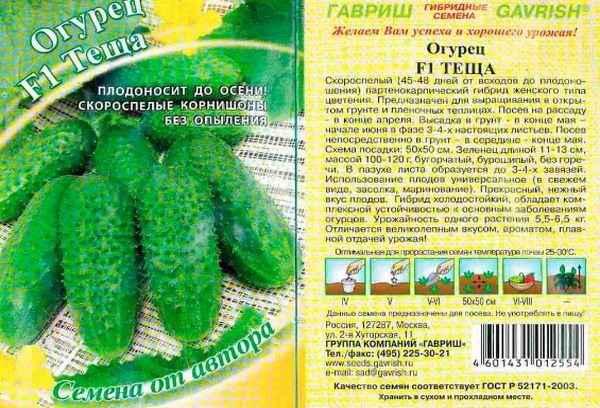
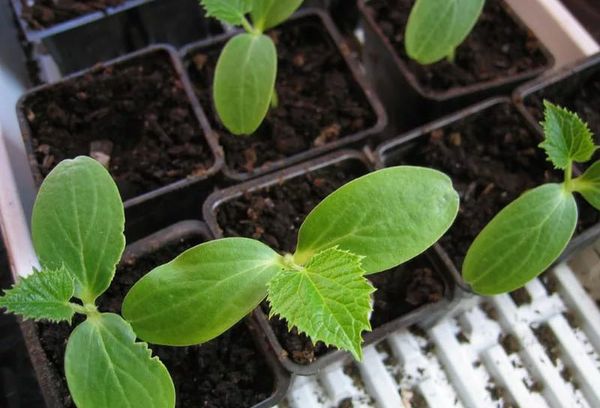
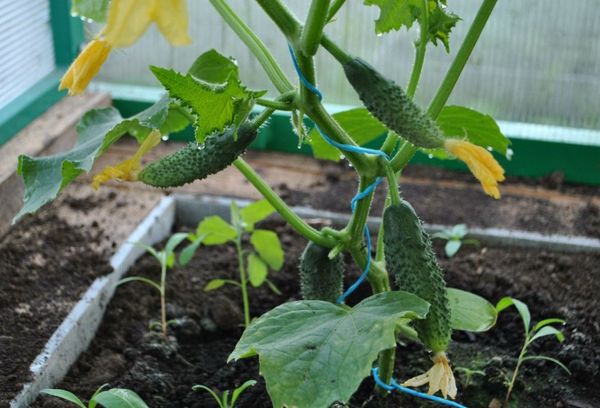

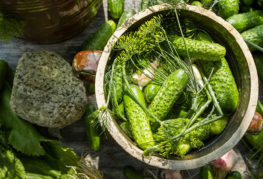
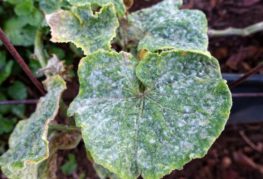
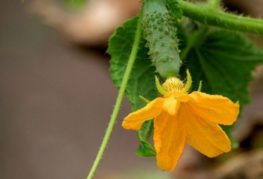
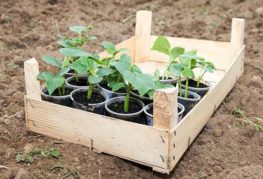

and will be published shortly.